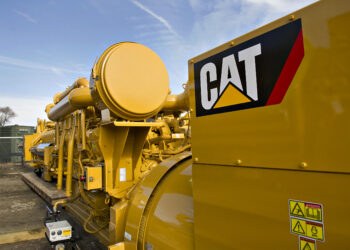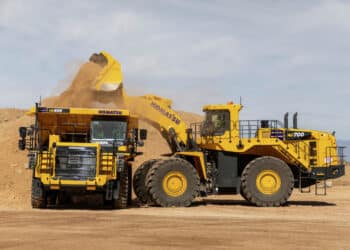Beige Book: Rising input costs strain construction sector
‘No one wants to spend money when future is so uncertain’
Rising input costs and tariff uncertainty are straining construction activity and loan demand in some regions.
The construction equipment industry has shown resilience to economic challenges this year, buoyed by large commercial projects including infrastructure and data center development.
However, rising input costs and prolonged tariff uncertainty are hinting that the construction project pipeline could dry up, according to the June 4 edition of the Federal Reserve’s Beige Book, based on data compiled before May 23. The report, published eight times per year, provides an overview of economic conditions specific to the Fed’s 12 regions.
In the Kansas City region, builders felt pressured by “robust increases” in material prices, with some considering reducing their workforces. Builders reported a decline in single-family home construction and demand despite offering “relatively strong” incentives to offset high interest rates.
One contractor in the Philadelphia region said projects were being stalled by the “inability to properly price material inputs” due to tariff uncertainty. While nonresidential construction dipped slightly in the region, public infrastructure projects remained active.
Some contractors in the Fed’s St. Louis district also reported delayed projects due to uncertainty and high input costs, while others noted an acceleration of projects driven by fear of increased prices.
In the Minneapolis district, a large share of contractors anticipate decreased or flat activity in the coming months as they prepare for increased competition for projects, “pervasive high costs” and labor constraints.
“No one wants to spend money when the future is so uncertain,” a northern Minnesota construction firm stated in the report, adding that price uncertainty was “pushing projects out of budget” and complicating bidding.
Furthermore, the report stated that equipment prices increased in the Chicago region, but nonresidential construction ticked up, with builders seeing higher demand for data centers and medical office space.
Lenders see mixed results
Commercial loan demand and credit conditions varied by region, reflecting trends in the equipment finance sector, which has seen steady business volume and rising credit approvals in 2025, with some flashes of financial stress and buyer hesitancy.
Commercial and industrial loans rose slightly in the Kansas City district, and loan quality remained stable.
Conversely, small and medium-sized banks in the New York region reported weakened loan demand across the board, with tariff uncertainty putting some deals on hold. However, credit conditions improved and delinquencies dropped.
There are concerns about the ability of farmers in the Chicago region to access financing, especially “heavily leveraged operators” and those unable to pay off 2024 loans. Agriculture loan demand spiked in the St. Louis region, but high interest rates remained a “top concern.”









